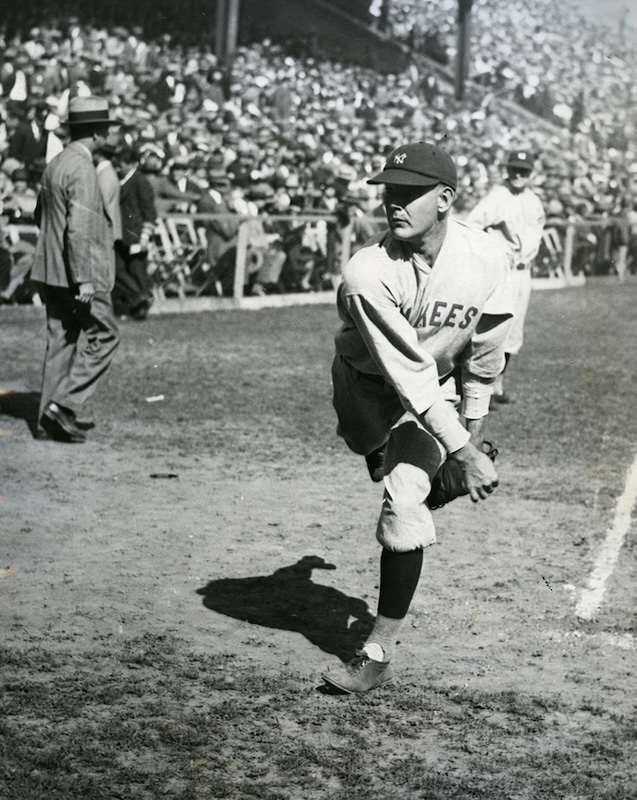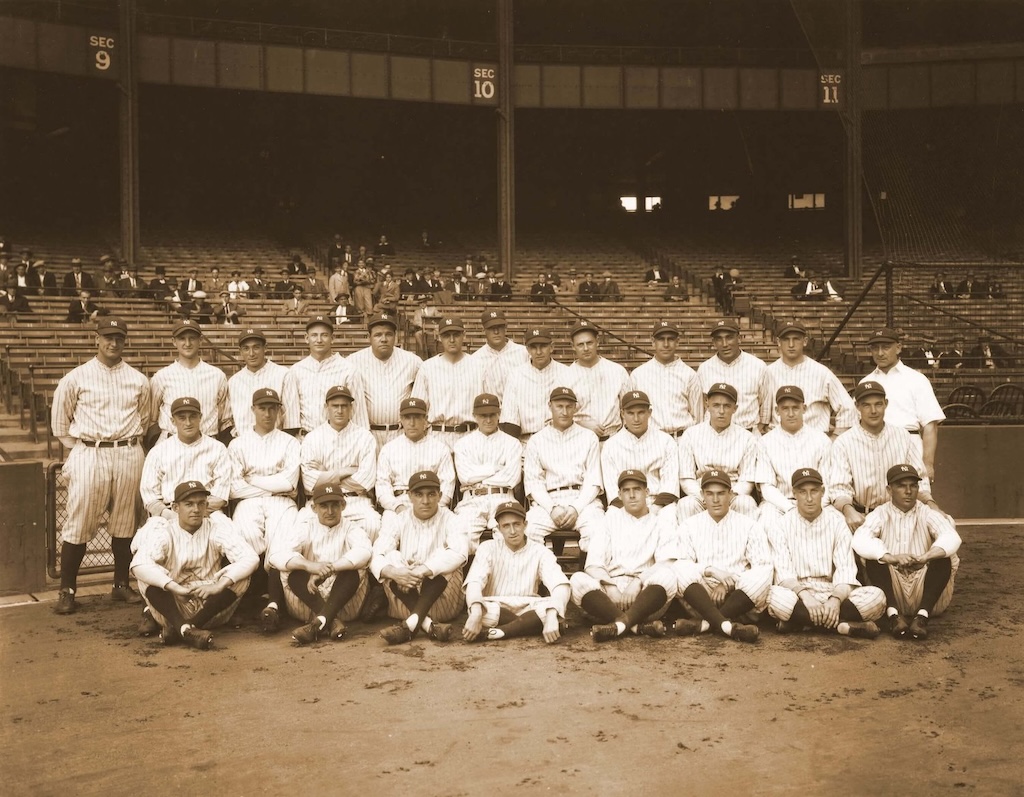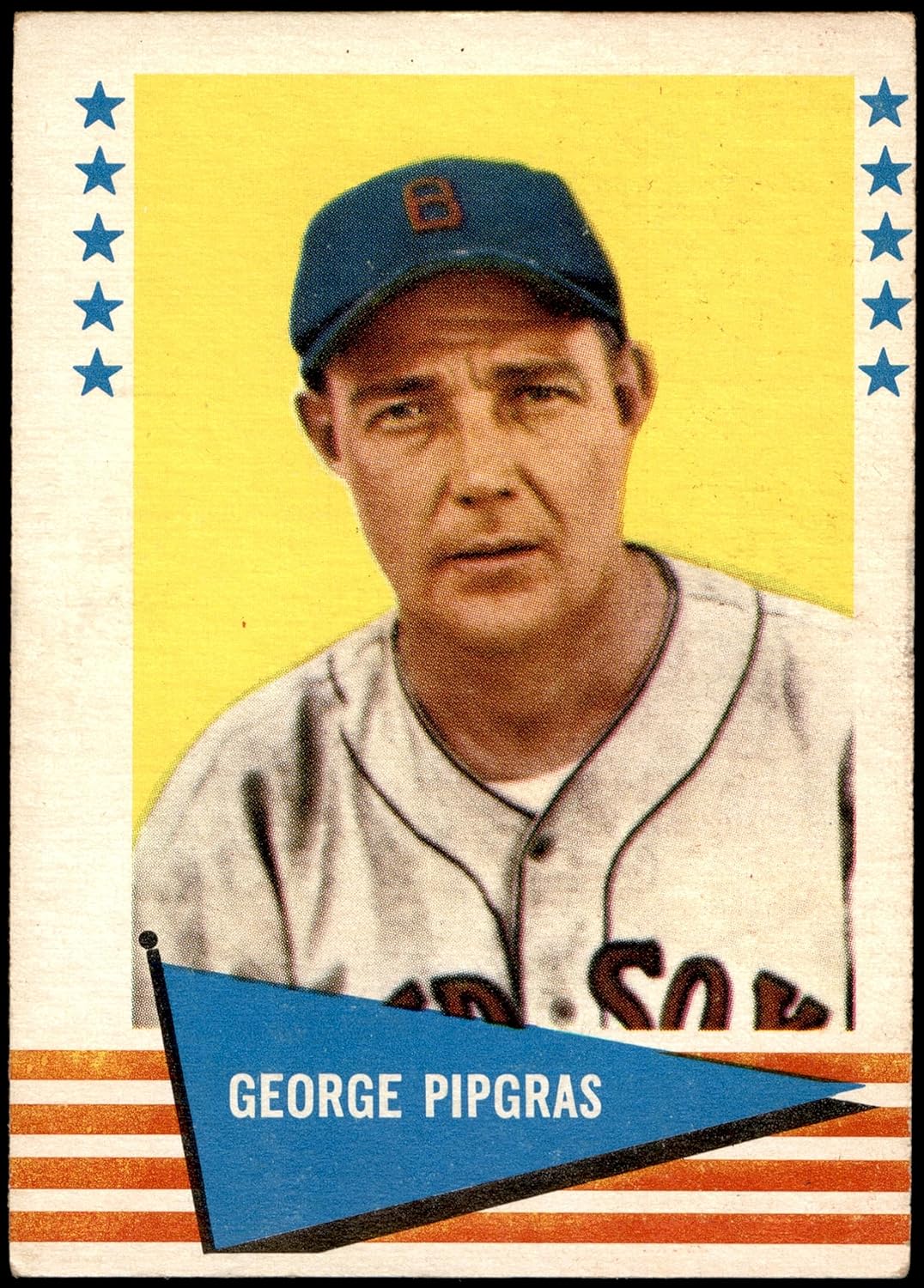
Iowa native and MLB pitcher George Pipgras led the New York Yankees to a 6-2 victory in Game 2 of the 1927 World Series by hurling a complete game against the Pittsburgh Pirates at Forbes Field on Oct. 6. The Yankees would sweep the Pirates to win the championship. “Those ’27 Yankees had everything. I don’t think any ball club in history could beat them. They were the tops,” Pipgras later told author Donald Honig. Photo courtesy of Hunt Auctions
May/June 2025 (Volume 17, Issue 3)
By Don Doxsie
As kids growing up on the family farm in northwest Iowa, baseball was a big part of everyday life for the Pipgras boys.
William Pipgras had played baseball in his younger days and as his five sons grew up, he made a few bucks on the side as an umpire. All five sons—George, Herman, Ed, Fred and Walter—were tall, strapping youths and William made certain all of them were exposed to the sport. Four of them became accomplished pitchers and the other one was a catcher. Fred had a solid minor league career. Ed pitched five games in the big leagues for the Brooklyn Dodgers in 1932. But George, the oldest, went much further, carving out a thoroughly unique baseball career that stretched far beyond the boundaries of his home state.
George Pipgras became one of the top starting pitchers for what many consider to be the greatest Major League Baseball (MLB) team ever assembled, the 1927 New York Yankees. The lineup featured superheroes Babe Ruth and Lou Gehrig along with fellow future MLB Hall of Fame inductees Earle Combs and Tony Lazzeri, nicknamed “Murderers Row.” That year, Ruth hit .356 with 60 home runs and 164 RBI, while Gehrig hit .373 with 47 homers and a league-leading 175 RBI. The Yankees also had a very good pitching staff, led by Waite Hoyt (22-7), Herb Pennock (19-8), Urban Shocker (18-6) and Pipgras (10-3), who was to emerge as the ace of the staff the following season.

The 1927 American League Champion New York Yankees team poses in Yankee Stadium for an official team photograph. George Pipgras is seated in the middle row, far right. Hall of Fame players on the team included Waite Hoyt (top row, fifth from right), Miller Huggins (middle row sixth from right), Herb Pennock (top row, second from left), Lou Gehrig (top row, far left), Tony Lazzeri (top row, third from left), Earle Combs (top row, third from left) and Babe Ruth (top row, fifth from left). Photo by Mark Rucker/Transcendental Graphics/Getty Images
After retiring as a player, Pipgras remained in the game as an umpire and may—or may not—have set an MLB record for the most players and coaches ejected in a single game.
Decades later, he stated that he enjoyed every minute of his time in baseball.
“I loved the game,” he said. “I’d rather throw that ball than eat.”
It all began about 50 miles east of Sioux City, on a 160-acre farm near Ida Grove, where Pipgras was born on Dec. 20, 1899. The family eventually moved to Schleswig about 15 miles to the south, where Pipgras learned about the value of hard work and commitment. Most days began at 4:30 a.m. with chores around the farm, followed by school and working in his father’s butcher shop. But he also found time for baseball.
He starred for the high school baseball team in Schleswig, normally throwing to his brother, Herman, the one who became a catcher. That continued when the family moved to Slayton, Minn.
When the United States entered World War I in 1917, George Pipgras enlisted in the U.S. Army even though he was only 17. At 6-foot-2, he was able to convince recruiters that he was older than he really was and he ended up serving in France, England and Germany with the 60th Engineer Corps.
After the war, he came home to help on the farm but still harbored hopes of making a career out of baseball.

He signed with a semi-professional team in Fulda, Minn., then moved on to a ball club in Joplin, Mo., before ending up with the minor league Saginaw Aces in the Class B Michigan-Ontario League in 1921. After walking 15 batters in five innings in his first game there, he was released and his career seemed to have come to a grinding halt.
He found himself stranded in Worthington, Minn., with 50 cents in his pocket and it cost 35 cents for breakfast that day. He decided to invest another nickel on a phone call to a friend, who told him that the Madison Greys of the Class D Dakota League were eager to add pitching help. A train ticket to Sioux Falls, S.D., where Madison was playing, cost 60 cents but the Greys must have been desperate. They wired him the 60 cents.
The gamble paid off. Pipgras went 12-6 with Madison and within two years was in the big leagues. The Boston Red Sox signed him and sent him to Charleston in the South Atlantic League, where Pipgras went 19-9 in 1922 and subsequently was sold to New York.
TO READ THE ENTIRE STORY AND OTHER FASCINATING STORIES ABOUT IOWA HISTORY, subscribe to Iowa History Journal.
